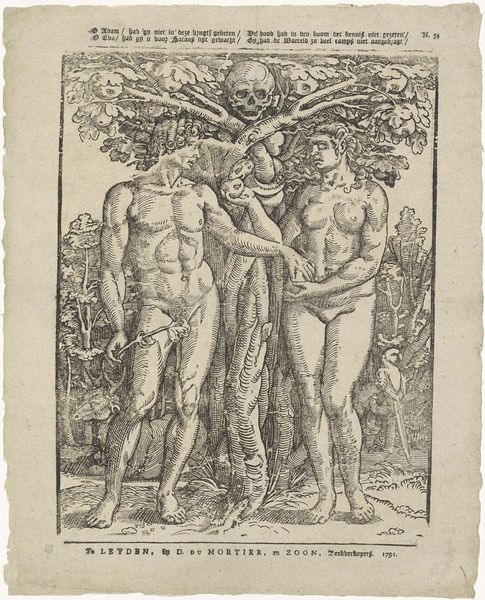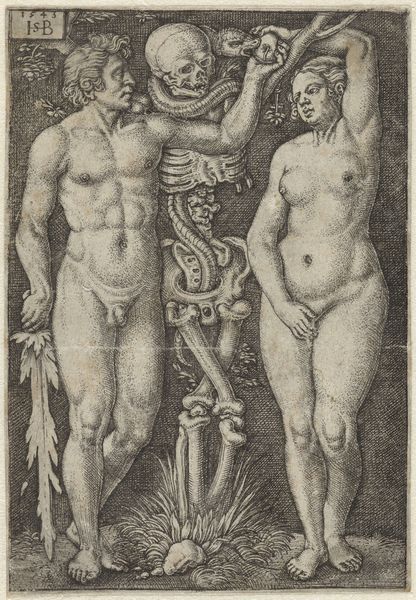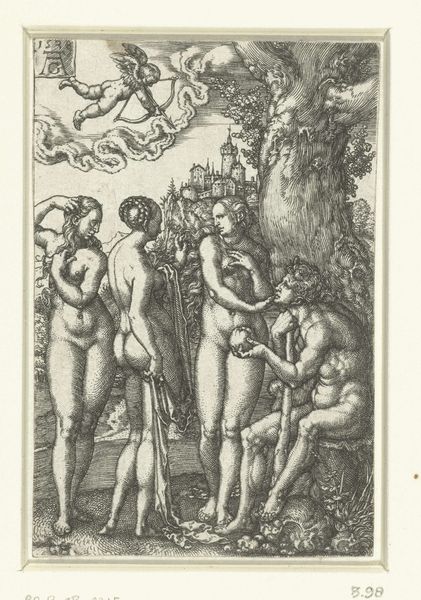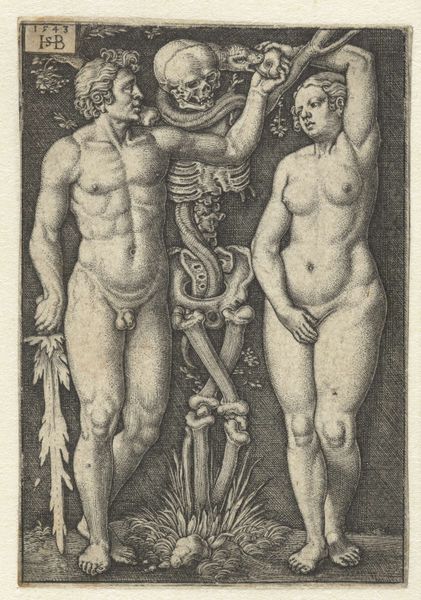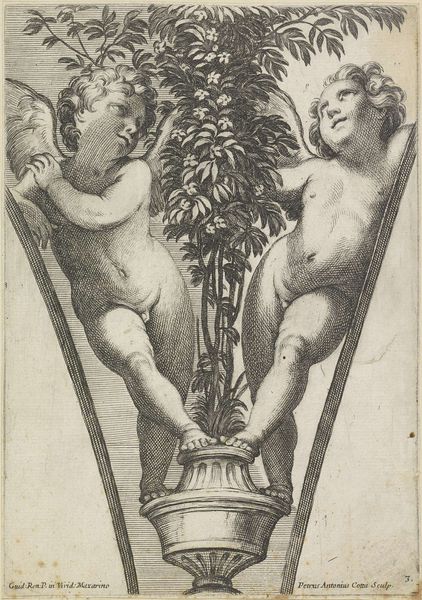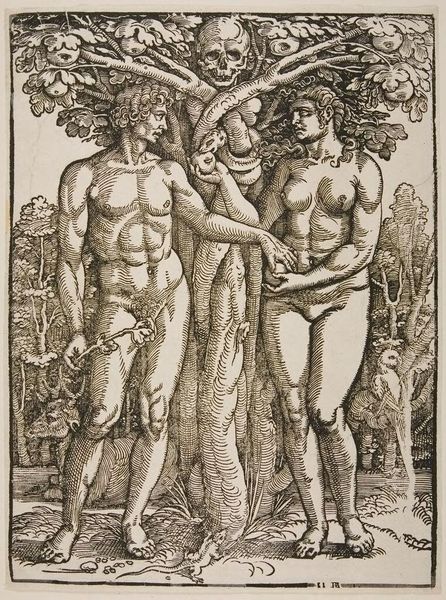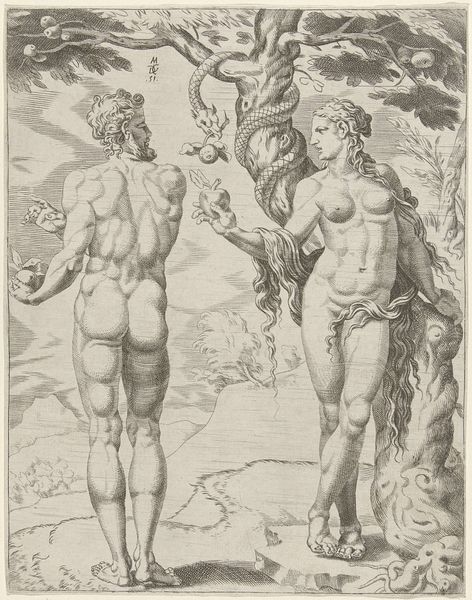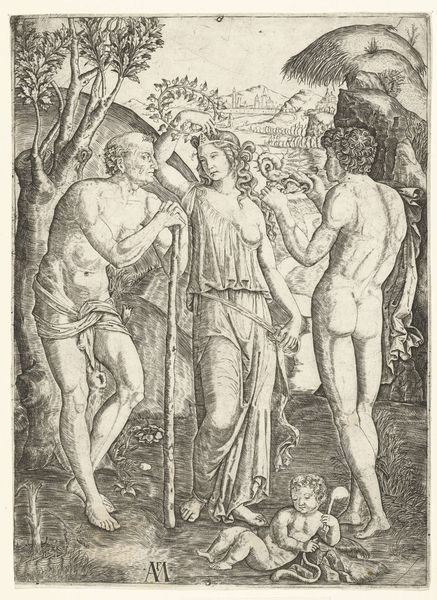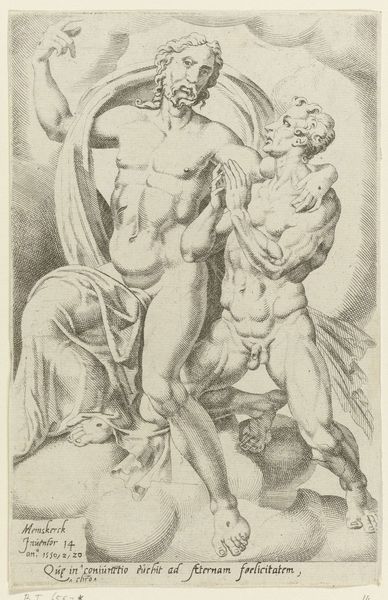
Drie gratiën staand in nis voor drie palmbomen en geflankeerd door kruiken waar water uit stroomt. 1510 - 1527
0:00
0:00
print, engraving
#
allegory
# print
#
figuration
#
italian-renaissance
#
nude
#
engraving
Dimensions: height 294 mm, width 225 mm
Copyright: Rijks Museum: Open Domain
Editor: Here we have Marcantonio Raimondi's engraving, "The Three Graces," created sometime between 1510 and 1527. It's a pretty small print, currently residing in the Rijksmuseum, and the figures seem to occupy this shallow, almost theatrical space. What visual traditions do you see Raimondi drawing from here? Curator: Visually, it's a potent blend, isn't it? We see a revival of classical ideals—the nude figures, the architectural niche, all point to antiquity. However, there is also a Mannerist sensibility, perhaps a psychological undercurrent with how the figures intertwine and present themselves. The Graces are almost performing their roles, self-conscious in their display. Does that theatrical quality speak to a certain awareness of the gaze, perhaps? Editor: I think that’s a great point. There’s something unsettling about how aware of the viewer they seem to be. It contrasts with the idea of idealized, innocent beauty. What about the water pouring from the urns – does that tie into ideas about beauty or perhaps morality? Curator: The flowing water is significant. It represents abundance, life-giving force. When paired with the Graces, those qualities shift. What emerges for me is the generosity of beauty. The Graces, in classical mythology, were givers of joy and beauty. So water pouring outwards may symbolize this act of bestowing or giving blessings onto humanity, and as these attributes cascade they replenish a well-spring of harmony and happiness in the world. They’re conduits of the sacred made visible and felt. It is the spirit made tangible and is as fluid and dynamic as emotions. Editor: So they're not just beautiful objects but active participants in spreading beauty? Curator: Precisely. The enduring power of the Graces lies not just in their form, but in the gifts they represent, sustaining humanity’s spiritual well-being. That memory has echoed down the centuries through image and symbol. Editor: I hadn't considered that. The Graces have always felt like static symbols to me, but this makes them much more alive and active!
Comments
No comments
Be the first to comment and join the conversation on the ultimate creative platform.

